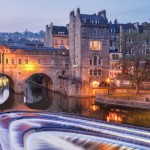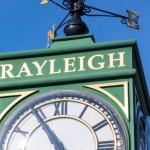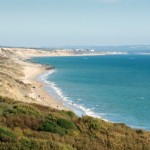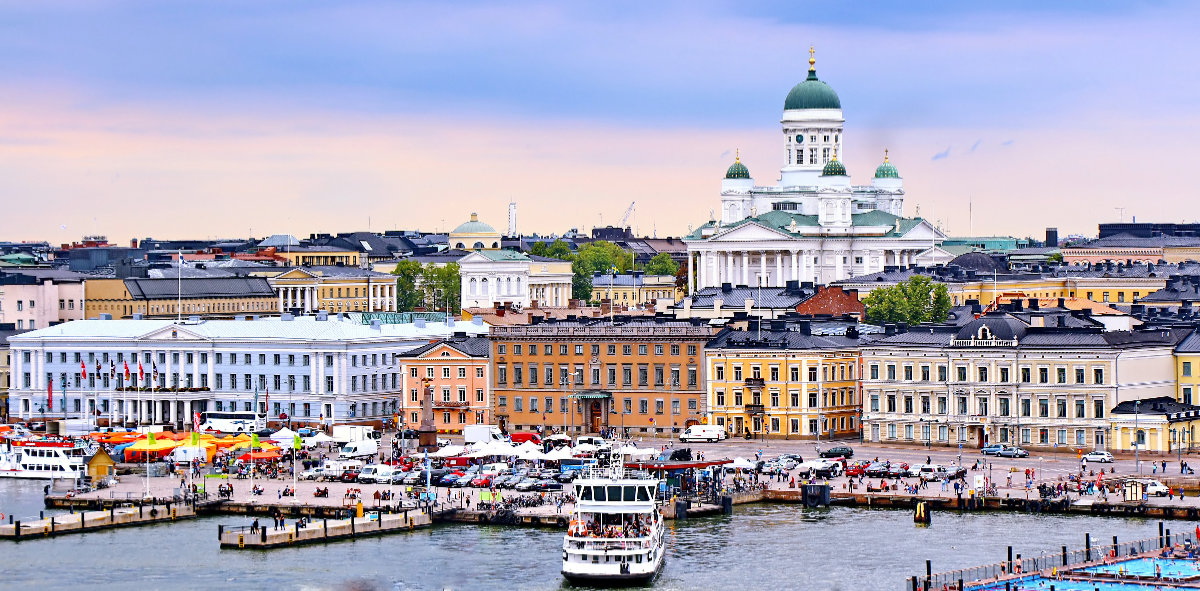
Helsinki
Of all major Scandinavian cities, Helsinki is arguably the least well-known and celebrated. While the likes of Stockholm and Copenhagen have entered the public consciousness as fabulous locales for a city break, the Finnish capital remains an enigma to many.
Thanks to glorious architecture and an ever-evolving social scene, this is likely to change. Helsinki is a quirky jewel in the Nordic crown, often referred as to, “the Daughter of the Baltic.” It’s arguably the ultimate destination for combining much-needed R&R with new travel experiences.
Before You Fly
If you’re planning a trip to Helsinki, you’ll need to make a checklist of your requirements.
Visas and Entry Restrictions
At the time of writing, UK citizens still enjoy freedom of movement in Helsinki. Finland is part of the EU, so you can cross the country’s borders without the need for a Visa, and without restriction as to how long you can stay.
If your passport was issued elsewhere, you may need to apply for a Schengen visa before you can enter Finland. Take a look to see if this applies your country of citizenship. If you can’t find your nationality on the list, it’s worth double-checking on any travel restrictions with your country’s Finnish embassy.
A Schengen visa allows unrestricted movement within 26 European countries that make up the Schengen Area. This territory includes all the Nordic nations, in addition to other popular destinations such as France, Spain, Portugal and Germany.
The rules and restrictions of a Schengen via follow the same pattern as most similar documents. You’ll be free to remain in the country for up to 89 days, on the proviso that you remain a tourist. That means no applying for permanent work or looking to take out a long-term residency agreement. If you want to exceed this time in Helsinki, you’ll need a residency permit.
Insurance
Finland’s publicly funded healthcare system is the envy of many worldwide authorities. Finnish citizens are entitled to, “free” treatment as the running costs of medical treatment are extracted from taxes, similar to our own NHS.
As a visitor to Finland, you will be expected to pay for any treatment. Thankfully, the costs are considered reasonable and the service exemplary. Provided you have an appropriate health insurance policy, you can relax in the event of becoming unwell while in Helsinki. Taking out a European Health Insurance Card (EHIC) before travelling with provide further peace of mind.
Getting to Helsinki
Helsinki Airport is the biggest in Finland, and it’s conveniently located a little over 10 miles from the city centre. The flight will typically take in the region of three hours.
Airlines flying directly into Helsinki from the UK include:
- British Airways (operating from London, Manchester, Edinburgh and Belfast)
- FinnAir (operating from London, Manchester and Edinburgh)
- Norwegian Air (operating from London and Edinburgh)
- Scandinavian Airlines (operating from London, Manchester and Edinburgh)
No cruise provider sails straight to Finland from the UK, though you could always travel to a neighbouring country and take a local ferry into Finland. Sweden is a popular destination for this. Alternatively, look into making your journey by rail.
As with travelling by sea, the rail route into Helsinki is via Sweden. You can reach Stockholm. via Eurostar if you change at Brussels. You can then take the ferry into Helsinki from the Swedish capital. Time it well and you’ll be able to make this journey in a single day, though as always, this depends upon connection times and a dose of good fortune.
Train Services
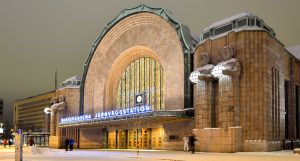
Helsinki’s Central Station must be right up there with the most beautiful Railway Stations in the World.
Image: Popova Valeriya/shutterstock.com
The Helsinki Central Railway Station is the main terminus of the rail network in Finland. Two rail corridors lead out of Helsinki, the Main Line to the north (to Tampere, Oulu, Rovaniemi), and the Coastal Line to the west (to Turku). The railway connection to the east branches from the Main Line outside of Helsinki at Kerava, and leads via Lahti to eastern parts of Finland and to Russia.
A majority of intercity passenger services in Finland originate or terminate at the Helsinki Central Railway Station. All major cities in Finland are connected to Helsinki by rail service, with departures several times a day. The most frequent service is to Tampere, with more than 25 intercity departures per day as of 2017. There are international services from Helsinki to Saint Petersburg and to Moscow in Russia. The Saint Petersburg to Helsinki route is operated with the Allegro high-speed trains.
A Helsinki to Tallinn Tunnel has been proposed[101] and agreed upon by representatives of the cities.[102] The rail tunnel would connect Helsinki to the Estonian capital Tallinn, further linking Helsinki to the rest of continental Europe by Rail Baltica.
Getting Around Helsinki
Public Transport
One of the defining features of Helsinki is the comparatively compact nature of the city. It’s easy to get around on foot. If your mobility is limited, consider making use of public transport. Helsinki boasts buses, trains, trams (the most popular form of transport in the city) and ferries.
The upshot is that, while cars are welcome in Helsinki, driving is often more trouble than it’s worth. You’ll spend more time seeking a parking space than you will seeing the city. Instead of hiring a car, invest in an HSL card upon arrival if you think you’ll need transport.
The HSL card can be used on public transport throughout Helsinki, as well as a number of neighbouring towns. You can pre-load the HSL card and use it on a Pay as You Go basis, topping up as and when necessary, or purchase the opportunity to travel for a set period of time.
Let us reiterate, though – if you’re only planning on spending time in central Helsinki, even an HSL card may be unnecessary. All major attractions are a short walk from each other. If you plan to expand your horizons a little, however, amazing sights are only ever a tram ride away.
Things to Do in Helsinki
Helsinki is nirvana for architecture enthusiasts. The buildings of Helsinki are notable for their clean, minimalist aesthetic, so it’s easy to lose hours wandering and drinking on the sight of the buildings.
Art and Culture
In addition to the memorable architecture, Helsinki boasts an impressive artistic community. The Ateneum Art Museum, part of the Finnish National Gallery, is a must visit for any art lover. To immerse yourself in local history, visit the Helsinki City Museum and the National Museum of Finland. If you’re still hankering for some contemporary art and fashion, The Design Museum has you covered.
You’ll also find plenty of theatres and cultural performances. The most reputable venue of all is, without doubt, the Helsinki City Theatre, which provides a wide range of different performances from various disciplines.
Helsinki is also considered a musical hotspot, so you’ll find plenty of live performances. Music Theatre Kapsäkki is a particularly legendary venue. Be a little careful if your tastes don’t extend to loud guitars and shotgun-blast drumbeats, however. Rock and metal music is hugely popular throughout Finland. You’ll also find Finnish folk musicians and jazz nights entertaining visitors in countless Helsinki bars, though.
Sport and Outdoor Events
You’ll have to head further north in Finland if you’re looking for ski slopes and winter sports – Helsinki is based at the basement of the country. The capital city does offer some sporting attractions, though.
Helsingin Jalkapalloklubi, which translates as, “the football club of Helsinki”, is the biggest local soccer team. HJK, as they are commonly known, play their home games at the Bolt Arena, which is located beside Helsinki’s Olympic village. Of equal importance to soccer in Helsinki is Ice Hockey. HIFK ply their trade at the Helsinki Ice Hall, regularly pulling in capacity crowds.
Spots of Natural Beauty
Finland has the nickname, “Land of a thousand lakes.” This sells Finland short – there are almost 200,000 bodies of water in the nation, without even considering the Baltic Sea. Naturally, this proximity to the ocean ensures access to plenty of beaches.
Helsinki is close to Lakeland, a stunning and scenic territory that is sure to centre anybody’s zen. Take a ferry and tour the hundreds of islands located close to the city, too.
Once you’re ready to get back on dry land, head toward some of the local national parks. The fresh air of Finland has to be experienced to be believed. Nuuksio is arguably the most celebrated park of all – and, if you keep your eyes peeled, you’ll see Finland’s most famous native, the Flying Squirrel, going about its business here.
Night Life
When the sun goes down – which, remember, may take quite some time in the summer – there is still plenty to enjoy in Helsinki. The restaurant trade, while costly, is booming. You’ll find no shortage of eateries anywhere you may be based, and there is plenty of choice. The residents of Helsinki are a diverse melting pot, so all tastes of cuisine are catered for, particular Asian restaurants.
If you’re keen to dance off your dinner, there are many nightclubs and late-night bars throughout Helsinki. LGBTQ travellers have been known to flock to the city to visit DTM, the largest gay-friendly nightspots in Northern Europe. There are a number of options though, many of which host themed nights and options sure to cater to any taste.
Where to Stay in Helsinki?
Vast swathes of Helsinki are accessible by foot. This means that you’re best served basing yourself in the city centre. The area is known as Kammpi. Anywhere else will be making needless work for yourself – hotels elsewhere are no cheaper and will just leave you further from the city’s main attractions.
You’ll find a wide array of hotels in Kammpi. Many of them will be costly, especially if you pick a recognisable chain, but there are budget options available. You can rest assured that all accommodation in Helsinki is clean and safe. You’ll also save money on transport as everything is accessible. There will be no need to burn money on expensive taxis.
You could also consider a self-catering city break. There are plenty of short-let apartments available to tourists in Helsinki. This may prove to be a more cost-effective solution, as you will enjoy a greater control over your spending. Again, Kammpi is the area to investigate here.
Thinking of Visiting Helsinki
Well if you are we can’t say we blame you as it really is one of the best cities in Europe. Given that we have written this for the benefit of non Scandanavians here are a few things to consider.
Currency
Unlike other Nordic countries, Finland has embraced the Euro as its national currency. The Euro replaced the Finnish Markka in 2002, so it has long been the only legal tender in the country. This makes currency exchanges simple. Just make sure you shop around for the best possible deal.
While assessing whether Helsinki could be considered an expensive city, we need to take a range of comparisons into consideration. On the face of it, Helsinki is the cheapest capital city in the area. It’s considered less costly than Oslo, Copenhagen and Stockholm.
Unfortunately, if you’re just making a flying visit, you’re unlikely to experience these financial perks – they relate to utility bills and cost of living. As a tourist, you’ll likely pay more for a good time in Helsinki than anywhere else. Alcohol, for example, is costlier in Helsinki than any other EU nation – priced at 177% above the average. Restaurants and hotels are similarly expensive.
As with any city, there are bargains to be found. Helsinki is also beautiful enough to worth pushing the boat a little financially. All the same, do not assume that Helsinki’s less prominent status means that it’s a cheap and cheerful destination.
Climate
Finland endures long and hard winters, which can last as long as six months. Expect average temperatures to remain below freezing until at least April.
The city is surrounded by the Baltic Sea, ensuring that winds are high and temperatures chilly at best. Temperatures drop to their lowest around February, though October, November, December and January are also typically sub-zero, in addition to being wet and windy.
The city has a year-round sauna culture to keep citizens warm, but if you’re averse to cold weather conditions, time your visit in the summer months. July is typically the warmest month in Helsinki. It’s still not comparable to the Caribbean, but you’ll be comfortable enough moving around without packing your winter gear. Just protect yourself against rain, which remains possible – even likely – at this time of year.
Temperature isn’t the only reason to wait for summer to visit Helsinki. The daylight hours are long in the summer, and very short in the winter. Visit around the period of the summer solstice and you’ll enjoy around 19 hours of sunlight per day. That means you’ll be able to cram plenty of activities – and photos – into your visit.
Language
Finnish and Swedish are the official languages of Finland, but English is widely spoken throughout the country – especially Helsinki. You’ll typically get around and communicate relying on English alone. Many of the road signs and tourist destinations repeat instructions and information in English.
All the same, some basic knowledge of Finnish will stand you well in the city. You should attempt to learn a few token Finnish phrases to get by. Just don’t expect to become fluent with a handful of lessons from Rosetta Stone. Finnish is a very different language to English, and the native grammar is almost as complicated as our own.
Helsinki natives can also be a little reserved, so you’ll endear yourself if you show a willingness to speak the local lingo. This is typically due to shyness, not standoffishness, but the less you’ll need to approach strangers for directions, the more comfortable everybody will be.
